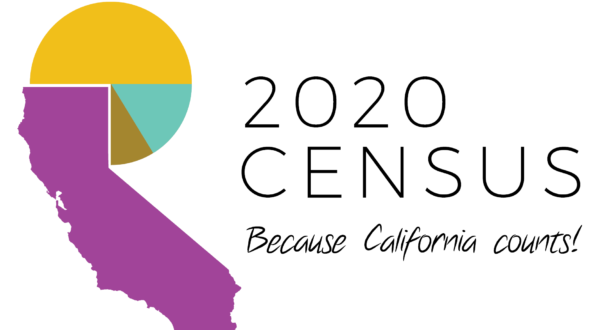By Tanu Henry | California Black Media
(EMPIRE NEWS NETWORK—ENN)— A little over 2.2 million African Americans call California home.
Of that number, 72 percent lives in southern California with the greatest concentration (about 36 percent) in Los Angeles County, followed by the Inland Empire, and then, the San Diego area.
The other 28 percent lives in the northern part of the state with the densest clusters of African Americans in and around the Bay Area, and a little bit east, centered around Sacramento and Central Valley.
California also has the fifth highest number of Blacks in the United States.
But when you look at percentages, California’s Black population compared to the total state population, makes up a little over 6.6 percent of the almost 40 million people living in the Golden State – ranking it 31st in the nation.
Two new reports, “Counting Black California” and “The State of Blacks In California” provided most of those numbers above and they dissect them in interesting ways, too. Created to instruct and support the work media publications, public affairs firms, community groups and others will do to educate Californians about participating in the 2020 Census, the surveys provide hyper-localized data on where Blacks live, who they are and a gives a scale of the areas of the state that census workers have had the hardest time counting with accuracy in the past.
The other 28 percent lives in the northern part of the state with the densest clusters of African Americans in and around the Bay Area, and a little bit east, centered around Sacramento and Central Valley.
California also has the fifth highest number of Blacks in the United States.
But when you look at percentages, California’s Black population compared to the total state population, makes up a little over 6.6 percent of the almost 40 million people living in the Golden State – ranking it 31st in the nation.
Two new reports, “Counting Black California” and “The State of Blacks In California” provided most of those numbers above and they dissect them in interesting ways, too. Created to instruct and support the work media publications, public affairs firms, community groups and others will do to educate Californians about participating in the 2020 Census, the surveys provide hyper-localized data on where Blacks live, who they are and a gives a scale of the areas of the state that census workers have had the hardest time counting with accuracy in the past.
“We approached this project thinking, ‘which data will be most useful to our network and partners when they are creating content to get the word out about the 2020 Census?,’” said Regina Wilson, Executive Director of California Black Media which commissioned the “Counting Black California” report.
“We’re equipping our network. We have a combined reach of more than 1 million people in the state – through print, digital and broadcast media,” Wilson said. “Now, they have the info they will need to develop super-targeted content for every segment of Black Californians living in every corner of the state.”
The “Counting Black California” report offers a county-by-county breakdown of demographic details and other data, including inflows of federal dollars into California and how many Blacks in the state are foreign born. It also identifies 8,057 census tracts in the state and ranks them on a scale from 1 to 9 – from the least to the most likely to respond to next year’s census survey. A number of social and economic factors are used to determine that rating.
“Now editors and journalists can look at a specific neighborhood or even a region, maybe, and find out who lives there, and where, and how difficult that place would be for census workers to count. Then, build a relevant informational campaign based on that knowledge,” said Walter Hawkins, a senior research associate at NewHawk, a southern California-based data collection firm. He conducted the research for the “Counting Black California” report.
“The State of Blacks in California” report provides “quality of life” data like income, marital status, poverty rates, levels of education, etc., that can be layered on top of the information in “Counting Black California” to gain a sense of the psychographics of Black California.
“Our report provides a deeper snapshot of the communities that have the largest Black populations in the state as well as the factors that need to be considered when engaging Black Californians,” said Kellie Todd, who authored the report. She is the founder of Sistallect, Inc., a statewide organization created to empower women of color.
“Although the Black community in California is concentrated in 10 counties, connecting with residents can be difficult without understanding that there are geographical and cultural differences from region to region, city to city, and even from neighborhood to neighborhood,” said Todd. “Using a coalition approach has proven to be the most effective way, as well as partnering with local Black media outlets, to have maximum impact.”
“The State of Blacks in California” report is packed with stats that reveal pertinent tidbits about different communities. For example, African Americans in Contra Costa, Orange and Solano counties have the highest average income in the state – all three at $53k – but Orange County has the lowest Black poverty rate at 15 percent. Orange County also has the most African Americans with college degrees (37 percent) followed by Contra Costa County (25 percent).
“There are so many exciting ways the end user can slice and dice the information in both reports,” said Wilson. “It arms us with everything we need to know to run a strong Census 2020 education campaign. It gives us really actionable data that allows us to effectively follow-through, check how well we’re doing and change course if we need to.”
 Westside Story Newspaper – Online The News of The Empire – Sharing the Quest for Excellence
Westside Story Newspaper – Online The News of The Empire – Sharing the Quest for Excellence




